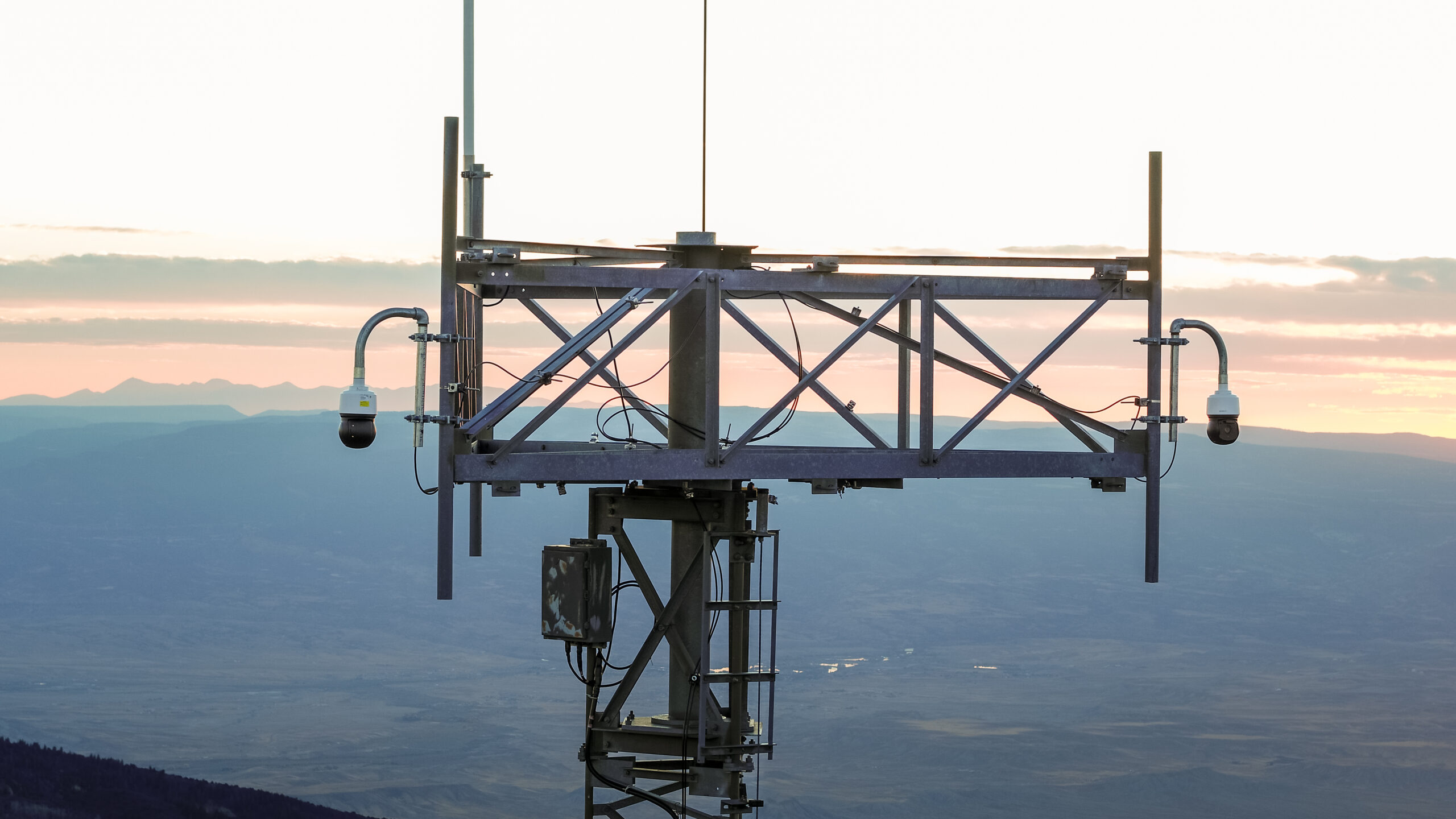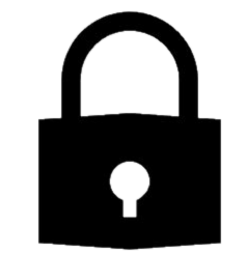Operational
Awareness
How we are making quick
and effective critical decisions
Operational and situational awareness on wildfire conditions helps us make critical decisions more quickly and effectively, and advanced technology can now be utilized to support these efforts. From using artificial intelligence that can detect wildfires, to using advanced risk modeling software to understand local wildfire threat conditions, innovations in technology are enhancing the way we operate our system to reduce wildfire risk and respond to fire events.
Early Wildfire Detection Cameras
Our network of rapid detect camera systems covers more than 1.5 million acres across Colorado. These systems are deployed on high vantage points and continuously scan the landscape using 360-degree, ultra-high-definition cameras and artificial intelligence to spot, evaluate and signal wildfire activity within a 15-mile radius. As soon as an incident is detected, a notification is sent to Xcel Energy and first responders, providing detailed visuals and location triangulation. Wildfire detection cameras offer greater visibility for first responders in hard-to-monitor terrain, providing critical early and real-time situational awareness when a wildfire ignites, allowing them to rapidly respond to fire events with greater accuracy and control.

Risk Modeling
To prioritize and target wildfire mitigation efforts, we’re continually improving our wildfire risk modeling and evaluating new information to further refine our mitigation activities. Our latest wildfire risk modeling software, Technosylva Wildfire Analyst, uses advanced fire spread modeling algorithms and dynamic weather data to enhance wildfire risk identification and estimate more accurate potential consequence estimates. Each day, the software evaluates current and forecasted weather conditions, detailed wind speed/direction, moisture levels and ground fuel conditions to estimate the direction and extent of where a wildfire might spread if an ignition were to occur. This risk modeling and simulation also provides valuable insights on the potential consequences of wildfires as fire weather conditions dynamically change.
Enhanced Powerline Safety Settings Program
Our Enhanced Powerline Safety Settings Program is one tool used to operate our system more conservatively in limited areas with increased wildfire risk. In this program, these settings use upgraded wildfire devices to operate our system more conservatively when wildfire conditions are elevated due a combination of high temperatures, dry ground fuel and high winds. By enabling more sensitive protection settings during times of increased fire risk, we help keep our customers and communities safe. Please keep in mind that wildfire risk may exist year-round in some areas.
How it works: Our distribution system is monitored 24/7 by both technology and people. We have added sensing equipment that interrupts the flow of energy to a line segment when it detects an issue, such as a tree branch or other object contacting a power line, to prevent the potential ignition of ground fuel.
We continue to upgrade our electric distribution system with wildfire devices that support more sensitive protection settings during periods of high wildfire risk. These upgrades allow the system in these areas to interrupt the flow of energy through a power line segment when a fault is detected, such as a tree branch or other object making contact with the power line, to prevent the potential ignition of ground fuel.
On standard settings, the line is tested to see if the fault is still present – for example, a branch touches a wire and then falls to the ground. In those cases, the circuit breaker is reset to start electricity flowing again. Momentary outages – when your power goes off for a few seconds – are a sign that the system is working the way it is supposed to.
With enhanced powerline safety settings, if a fault is present the line remains de-energized until crews can patrol the area to ensure it is safe to restore service. This approach helps keep our communities safe, while we do our best to minimize impacts, some communities in designated risk zones may experience more frequent or longer outages, as we ensure the safety of our customers in these areas.
Read the Enhanced Powerline Safety Settings information sheet for more details.
Work Completed and Planned
| 2019-2021 | 2022-2023 | |
 |
Identified need for additional reclosers
Enhanced risk and wildfire spread modeling Investigated additional transmission assessments including conductor analysis, climbing and drones Accelerated and enhanced vegetation inspections, wind strength modeling programs and asset data gathering |
Initiated Wildfire Safety Settings
Development of Public Safety Power Shut-off program Continued aerial and visual inspections of transmission and distribution lines in Wildfire Risk Zones |
 |
Repair and replacement of distribution system equipment identified through accelerated aerial inspections
Repaired or replaced over 550 transmission system priority defects Upgraded fuses and lightning arrestors Installed 31 substation protection relays and distribution reclosures Initiated wire replacement initiatives Expanded vegetation management actions |
Ongoing repair and replacement of urgent defects
Continued upgrade to Wildfire Standard equipment Continued vegetation management of transmission and distribution lines |
 |
Performed a distribution feeder protection study
Initiated substation relay upgrades Performed a wind strength analysis of transmission and distribution structures Implemented “Wildfire Mode” on reclosure equipment in pilot feeders within the Wildfire Risk Zones to prevent potential incidents Develop and consider alternative operating protocols in high-risk areas to reduce wildfire risk under certain conditions Initiated fire-safe work practices within the Wildfire Risk Zones |
Enhance system protection using Advanced Distribution Management System’s operational capabilities
Improve response protocols Continue to facilitate Fire Prevention, Wires Down, Ignition Reporting and Wildfire Equipment and Standards training Expand feeders with “Wildfire Mode” on reclosure equipment Expand weather station and 360-degree camera networks for enhanced real-time awareness of wildfire risk Deploy new software to model and forecast wildfire risk and fire behavior, using specific locations and conditions |